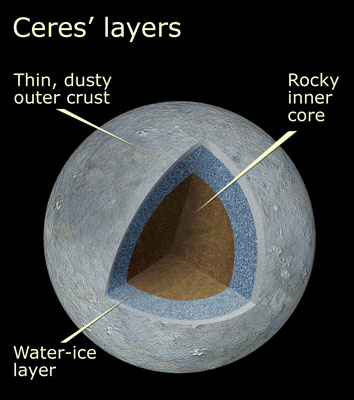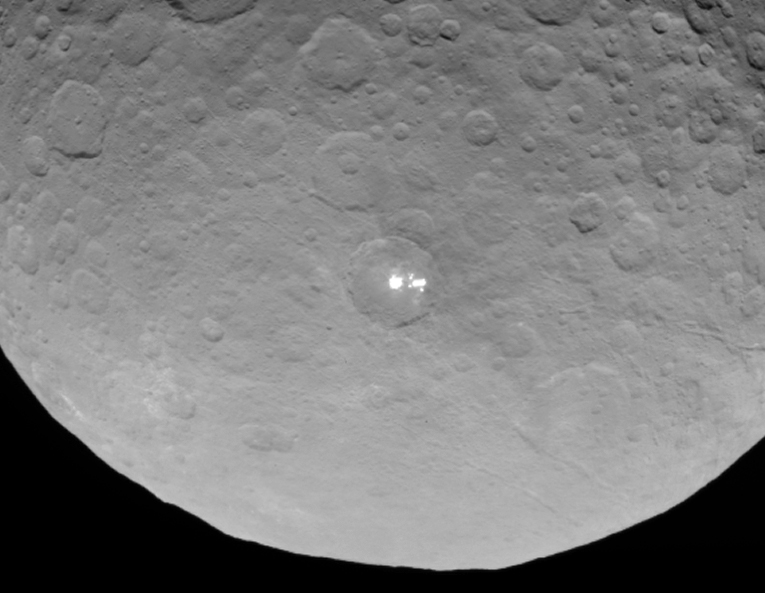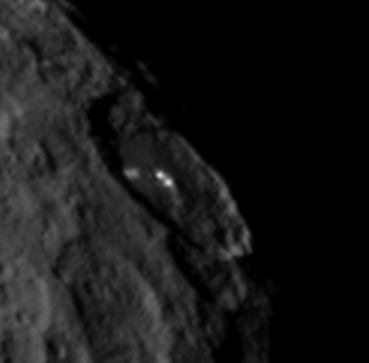It looks like you're using an Ad Blocker.
Please white-list or disable AboveTopSecret.com in your ad-blocking tool.
Thank you.
Some features of ATS will be disabled while you continue to use an ad-blocker.
share:
originally posted by: ketsuko
originally posted by: Gothmog
The Mass Relay and Element 0 . On the serious side I would agree possibly ice from a recent direct hit from a small comet .
Ooooo! Does that mean we have to get ready to shoot us some Turians? I hope not. Garrus was the best bro character ever.
But I have my Vindicator locked and loaded.
You bring Garrus I would hands down choose Wrex . How would you like for us to arrest you. Wrex: I would like to see you try......
a reply to: SkepticOverlord
It interesting that when virtually all the light, including the sun light hitting Ceres is filtered out, the intensity of the light spots is not effected.
It interesting that when virtually all the light, including the sun light hitting Ceres is filtered out, the intensity of the light spots is not effected.
originally posted by: VoidHawk
a reply to: smurfy
Good point about the source!
I slowed it down a little and marked an oddity
The same guy is present in the NASA gif as if like a frame marker, while it's all over the shop, there's other fluff too like a black spot, which seems like a dirt artifact, but also all over the shop, so these things are present in both gifs.
I need to look at the series of Ceres pictures on their own.
Impact glass created from whatever caused the crater ... is this not seen on impact craters all over earth?
originally posted by: Aliensun
a reply to: 3danimator2014
Explain the dark spots that are first at one location and then another.
Then there is another spot that seems to enlarge or darken itself at the right sight of the crater. It definitely is not a camera glitch and it resembles the spot briefly seen toward the lower edge of crater. There is reason to believe that is one object in three different positions. Is that a "still imaging" camera or shots from a video?
I can't. No one can yet. Does that mean I jump to the alien conclusion? No. Because I use my common sense. And I am normal.
a reply to: VoidHawk
You guys are a bit late in reporting the black objects. I re[prted such in about the forth response in. The response from another poster to mine was that he didn't even see what I reported but whatever, it was a camera glitch. You call that dismissal out of hand. But yet you can clearly see that the right spot is in other images but smaller and then gets larger. Whatever, it and the other two fleeting spots/objects need attention and explanation.
You guys are a bit late in reporting the black objects. I re[prted such in about the forth response in. The response from another poster to mine was that he didn't even see what I reported but whatever, it was a camera glitch. You call that dismissal out of hand. But yet you can clearly see that the right spot is in other images but smaller and then gets larger. Whatever, it and the other two fleeting spots/objects need attention and explanation.
edit on 14-5-2015 by Aliensun because: (no reason given)
originally posted by: woogleuk
Could it be glass, formed from the heat of an impact event? I know Ceres doesn't have an atmosphere to cause incoming bodies to generate frictional heat, but maybe something we have yet to discover could itself be hot enough?
That has happened on Earth. In Libya, there is a desert that is covered with a light green glass created from silicon dioxide that melted at high temperatures:
www.temehu.com...
originally posted by: gspat
The actual "color" of Ceres is something close to coal, or mostly black...
They had to turn the gain way the heck up on the camera...
High enough that anything "not black", for lack of a better term, is simply saturating the pixels and looks white and glow-ey.
Wait for closer pictures, then there will be ir data as well (too far away yet, no resolution) so we can actually try to figure out what it is.
I'm guessing it's just lighter colored rock.
If the explanation was that simple, NASA would not be saying "we have some theories but we have no idea what it is."
The illumination reminds me of the soft illuminating property of a glow stick where the light doesn't project but diffuses around the immediate
surface area of the source. I remember in starwars canteena on the tables they had lights which give off that glow stick white glow look.
could it be some sort of primordal lava soup boiled up to the surface from pressure without forming a mountain. lava would give off a glow.
originally posted by: bobs_uruncle
a reply to: Kapusta
Snow or ice, even a solid gas like oxygen or carbon dioxide would have sublimated into the vacuum of space millions or billions of years ago. Only thing I can think of that would be natural would be the remnants of a meteor or asteroid, one that somehow left a reflective surface in the fragments.
Cheers - Dave
Perhaps that ice is somehow continually being fed from the sub-surface ice that is thought to be just below the surface (Ceres is believed to be composed of up to 25% water-ice):

Source:
NASA -- Ceres' Overview
Anther possibility is that these are salt-flats left behind by salty or mineral-rich water that sublimated away, leaving only the mineral salts behind. It's also possible that the high mineral content or saline content of the water ice is preventing it from sublimating easily (some minerals can affect the rate of sublimation), so the mineral salt flats could still have a bit of a water-ice component.
Maybe this salty-icy patch is being fed slowly, and the rate of sublimation is slowed by the mineral content, so that's why this could continue for a long time without exhausting Ceres' supply of water. However, maybe the rate that this is being re-fed is fast enough to allow the patch to remain uncovered, rather than collect a space-dust covering.
edit on 5/15/2015 by Soylent Green Is People because: (no reason given)
a reply to: Soylent Green Is People
SO analyzed the digital image and came to the conclusion that it was a radiating source like a grow light.
Hawking has been talking about off Earth colonization for over a decade.
Could be a secret UK project to grow hydroponic Romaine.
The history of Jodrell bank is an interesting read.
Steak and Ale might source the UK supplier for their unlimited salad bar.
SO analyzed the digital image and came to the conclusion that it was a radiating source like a grow light.
Hawking has been talking about off Earth colonization for over a decade.
Could be a secret UK project to grow hydroponic Romaine.
The history of Jodrell bank is an interesting read.
Steak and Ale might source the UK supplier for their unlimited salad bar.
originally posted by: Cauliflower
a reply to: Soylent Green Is People
SO analyzed the digital image and came to the conclusion that it was a radiating source like a grow light....
I didn't see SO's detailed analysis, but he mentions on the first page of this thread that it seemed the areas of the crater lit up around these bright spots could be the result of the spots still being reflections. The bright spots could be reflecting enough light to also light up the areas around it.
That does make sense. Reflected light could cause secondary lighting of the area around it.
edit on 5/15/2015 by Soylent Green Is People because: (no reason given)
this idea is way out in left field...the metal Mercury (quick silver) might have been in abundance carried there by the impact object...
that would need to be a huge, concentrated ore deposit considering Mercury on Earth is disbursed in concentrations of less than 15% ...Spain deposits of Cinnabar are the richest source of Mercury mining
reference source: www.greenfacts.org...
lets also consider the temperature on/of Ceres, no winds or other ways of uncovering deeper ice or salt flats...it seem the only way to cause an anomaly like bright-spots in a jagged gridwork is by depositing a shiny or lighter mineral on the surface...
but we will get a 2/3rds closer look according to an earlier poster report
that would need to be a huge, concentrated ore deposit considering Mercury on Earth is disbursed in concentrations of less than 15% ...Spain deposits of Cinnabar are the richest source of Mercury mining
reference source: www.greenfacts.org...
lets also consider the temperature on/of Ceres, no winds or other ways of uncovering deeper ice or salt flats...it seem the only way to cause an anomaly like bright-spots in a jagged gridwork is by depositing a shiny or lighter mineral on the surface...
but we will get a 2/3rds closer look according to an earlier poster report
a reply to: EartOccupant
This was my first thought. Could these spots not be "holes" with some sort of burning magma beneath?
I'll admit I haven't done much research on Ceres myself yet. But I've been keeping up with some of the posts on here.
I always like to just boil it down to basic "common sense" facts. There's not too much stuff (that we know of) that produces light naturally. The fact that the light is emitting from near enough the centre of an impact crater suggests to me that either A: as others have stated, its some residual glass or reflective material left over from whatever caused the impact. Or B: Maybe the surface isn't so solid and it has broken through to a "volcanic" chamber? Or just a hollow chamber and whatever impacted it has broken through and continued to burn from within?
Just good for thought I guess. .. Or maybe it is an epic skylight for all the alien gamers within? Heheh.
Only thing that we can rely on, is that whatever it is, the government will be kind enough to keep it hidden for about 20 odd years. Lol
This was my first thought. Could these spots not be "holes" with some sort of burning magma beneath?
I'll admit I haven't done much research on Ceres myself yet. But I've been keeping up with some of the posts on here.
I always like to just boil it down to basic "common sense" facts. There's not too much stuff (that we know of) that produces light naturally. The fact that the light is emitting from near enough the centre of an impact crater suggests to me that either A: as others have stated, its some residual glass or reflective material left over from whatever caused the impact. Or B: Maybe the surface isn't so solid and it has broken through to a "volcanic" chamber? Or just a hollow chamber and whatever impacted it has broken through and continued to burn from within?
Just good for thought I guess. .. Or maybe it is an epic skylight for all the alien gamers within? Heheh.
Only thing that we can rely on, is that whatever it is, the government will be kind enough to keep it hidden for about 20 odd years. Lol
If these spots are simply a reflection, they are a damn bright reflection!
Although this is an interesting topic, we still don't have enough information to try to get a better idea of what those may be.
Getting a white area on a greyscale image means only that the brightness of that area reached the sensor's limit, it doesn't say a thing about the colour, and only those that know the camera settings when the photo was taken can get an idea of the relative brightness of those areas.
Considering the lack of light at that distance from the Sun and the (apparently) dark surface of Ceres, a relatively bright area may appear like the ones on these photos, it doesn't even have to be a highly reflective area.
Getting a white area on a greyscale image means only that the brightness of that area reached the sensor's limit, it doesn't say a thing about the colour, and only those that know the camera settings when the photo was taken can get an idea of the relative brightness of those areas.
Considering the lack of light at that distance from the Sun and the (apparently) dark surface of Ceres, a relatively bright area may appear like the ones on these photos, it doesn't even have to be a highly reflective area.
new topics
-
It’s Falling…
Philosophy and Metaphysics: 1 hours ago -
Steering the Titantic from the Drydock.
Rant: 4 hours ago
top topics
-
House Passes Laken Riley Act
Mainstream News: 16 hours ago, 24 flags -
Hearing more ambulances lately
Medical Issues & Conspiracies: 15 hours ago, 8 flags -
Steering the Titantic from the Drydock.
Rant: 4 hours ago, 8 flags -
Los Angeles brush fires latest: 2 blazes threaten structures, prompt evacuations
Mainstream News: 15 hours ago, 7 flags -
Paramilitary Leaks - John Williams
Whistle Blowers and Leaked Documents: 13 hours ago, 6 flags -
The more I think about it
General Chit Chat: 16 hours ago, 4 flags -
Some sausage, some chicken, some sauce, some onions and some garlic...and some peppers!
Food and Cooking: 14 hours ago, 3 flags -
It’s Falling…
Philosophy and Metaphysics: 1 hours ago, 2 flags
active topics
-
Steering the Titantic from the Drydock.
Rant • 15 • : lilzazz -
House Passes Laken Riley Act
Mainstream News • 18 • : Xtrozero -
A Complete List of All 149 MKULTRA Subprojects
General Conspiracies • 67 • : WeMustCare -
Los Angeles brush fires latest: 2 blazes threaten structures, prompt evacuations
Mainstream News • 14 • : Ravenwatcher -
Post A Funny (T&C Friendly) Pic Part IV: The LOL awakens!
General Chit Chat • 8002 • : underpass61 -
The more I think about it
General Chit Chat • 6 • : chiefsmom -
ILLUMINATION: Dimensions / Degrees – Da Vincis Last Supper And The Philosophers Stone
Secret Societies • 22 • : CarlLaFong -
Remember These Attacks When President Trump 2.0 Retribution-Justice Commences.
2024 Elections • 139 • : Oldcarpy2 -
Canada as a state .. how would it work?
General Chit Chat • 19 • : Freeborn -
It’s Falling…
Philosophy and Metaphysics • 0 • : JJproductions


